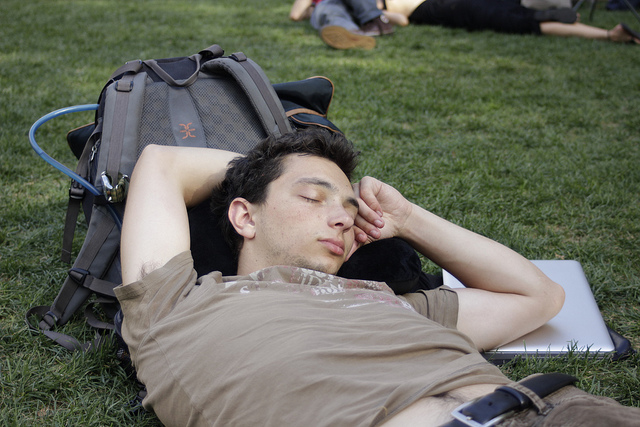Sleep Hacks To Maximize Your Shut-Eye

However, finals season is perhaps the time when college students need sleep the most. The brain builds learning and memory pathways during sleep, so people need about seven to nine hours of sleep per night to optimally learn and retain information. Getting enough shut-eye is also important in helping students focus during the big test the next day.
The sad truth is that even seven hours of sleep is a dream for many students. Doctor Avi Ishaaya, a sleep physician and assistant clinical professor at UCLA’s School of Medicine, says at the bare minimum, students should get at least five and a half hours of sleep per night. “Less than that and you start to feel the effects of sleep deprivation, which are memory loss, poor recall, poor attention span, poor concentration and poor reflexes,” Ishaaya explains.
Research suggests that people can battle that tired and miserable feeling of waking up several hours too soon by sleeping in increments of 90 minutes. That’s the average amount of time it takes humans’ to complete an entire sleep cycle, including the restorative, deep sleep REM stage. By sleeping for four and a half hours instead of five, students won’t feel as groggy because they did not interrupt their sleep cycle.
READ MORE: Sleep More To Combat Obesity
Tired teens and 20-somethings can also make up for lost sleep at night by taking a nap during the day. The best times for that are from 1 to 3 p.m. or 5 to 7 p.m. when the body has a natural sleep period, according to sleep coach Nick Littlehales.
Many students use copious amounts of caffeine and drugs like Adderall to fight their natural sleep periods. Ishaaya recommends that people stay away from these types of drugs after 2 p.m. because not only will it make it harder to fall asleep after all the studying is done, it also affects the quality of the sleep. Most of these drugs have a half-life, so that even when most of their effects wear off, they will still be active in the system and may prevent users from getting a deep, restful sleep.
Before going to bed, students may also want to avoid using their phone or laptop. These screens emit a blue light that can prevent the release of melatonin, a hormone that reduces alertness and makes sleep more inviting at night. Instead of cramming for a test on a laptop, students should try rereading their handwritten notes or course books as they wind down the day.
READ MORE: Can Cell Phones Affect Sleep?
For students in a real time crunch, clinical psychologist and sleep specialist Michael Breus told “CBS This Morning” about his own “nap-a-latte” method.
"What you do is cool down a cup of drip coffee, which has the highest caffeine content," says Breus. "You drink it very quickly and then you take a 20-minute nap," he explained. "The caffeine hits your system approximately 20 to 25 minutes, you get enough stage-one, stage-two sleep and you're good for four hours."
But this type of nap shouldn’t be the norm.
Ishaaya stressed the importance of having a consistent sleep schedule and paying back sleep on weekends or whenever students can catch up on sleep that they missed during the week. A slew of good grades would hardly make up for the long term effects of sleep deprivation, including weight gain, depression, weakened immune system, diabetes and heart disease.



